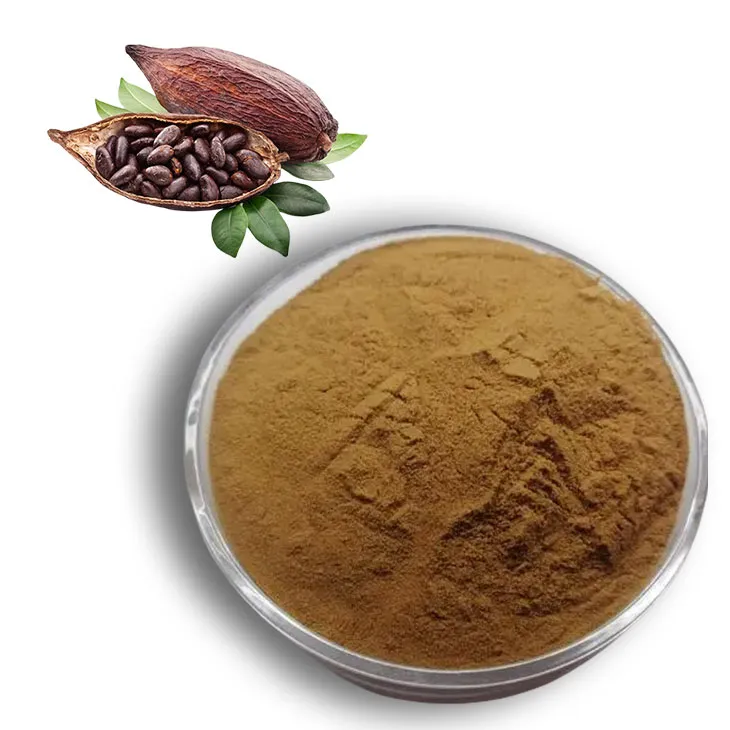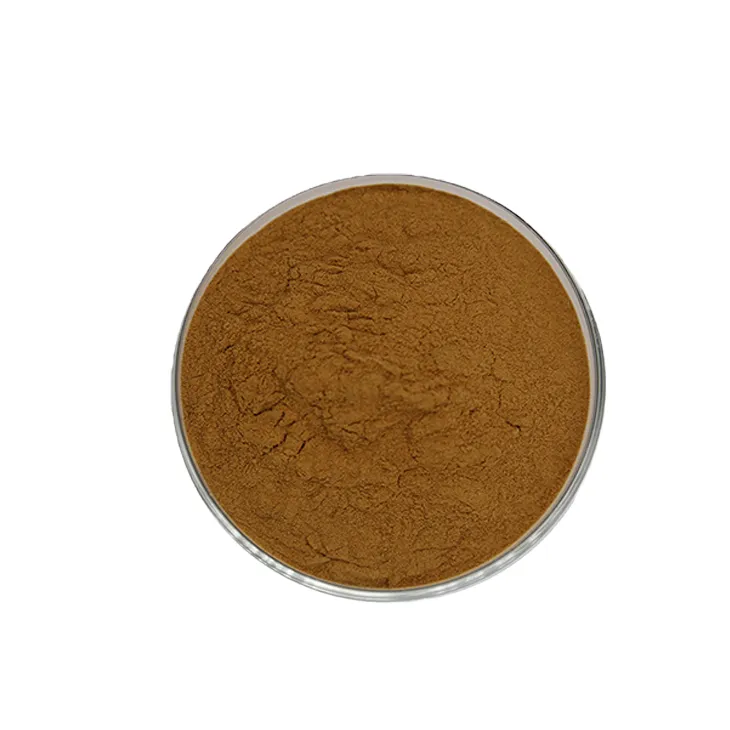- 0086-571-85302990
- sales@greenskybio.com
China Cocoa Extract Factory.
2024-11-29

Introduction
China's Cocoa Extract factories play a vital role in the country's food processing industry. These factories are dedicated to converting cocoa beans into precious extracts. In today's global market, the demand for high - quality Cocoa Extracts is constantly increasing, and Chinese factories are rising to the challenge.

Quality Standards
Strict Adherence
- Chinese Cocoa Extract factories must follow both international and domestic quality standards. This is crucial for ensuring the safety and quality of their products in both the domestic and international markets.
- International standards, such as those set by the Codex Alimentarius Commission, provide a benchmark for product quality, safety, and labeling. Domestic standards in China also play a significant role in safeguarding consumers' health and promoting fair trade within the country.

Production Process
1. Procurement of Raw Cocoa Beans
- The production process commences with the careful procurement of raw cocoa beans. Factories need to source high - quality beans from reliable suppliers. These suppliers are often located in regions known for cocoa production, such as Africa, South America, and Southeast Asia.
- When selecting suppliers, factors like the quality of the beans, the farming practices used (e.g., organic or conventional), and the price are all taken into consideration.
- Once the beans are procured, they undergo a thorough cleaning process. This is necessary to remove any foreign matter, such as dirt, twigs, or stones that may be present in the beans.
- Modern cleaning equipment is used to ensure that the beans are as clean as possible before further processing. This equipment can range from simple sieves to more advanced mechanical cleaners.
- Some types of cocoa beans require fermentation to develop their characteristic flavors. Fermentation is a complex biochemical process that can significantly impact the quality of the final extract.
- During fermentation, microorganisms break down the sugars in the cocoa beans, producing various compounds that contribute to the flavor and aroma of the beans. Factories need to carefully control the fermentation process to ensure consistent quality.
- After cleaning and fermentation (if applicable), the cocoa beans are dried. Drying is essential for reducing the moisture content of the beans, which helps to prevent spoilage and mold growth.
- There are different drying methods available, including sun - drying and mechanical drying. Each method has its own advantages and disadvantages, and factories may choose the method that best suits their needs and resources.
- Once the beans are fully prepared, they are processed for extraction. This is a crucial step in the production of cocoa extract.
- Factories use state - of - the - art equipment for extraction. These machines are designed to extract the maximum amount of valuable compounds from the cocoa beans while minimizing waste.

Applications of Cocoa Extracts
1. Chocolates
- Cocoa extracts are a fundamental ingredient in chocolates. They contribute to the rich flavor, smooth texture, and deep color that are characteristic of high - quality chocolates.
- Chocolate manufacturers rely on cocoa extracts to create a wide variety of chocolate products, from dark chocolates with a high percentage of cocoa solids to milk chocolates and white chocolates.
- In the cosmetics industry, cocoa extracts are used for their antioxidant and moisturizing properties. They can be found in products such as lotions, creams, and lip balms.
- The antioxidants in cocoa extracts help to protect the skin from free radical damage, while the moisturizing properties keep the skin hydrated and soft.
- Cocoa extracts also have potential applications in the pharmaceutical industry. Research has shown that certain compounds in cocoa may have health - promoting effects, such as reducing blood pressure and improving cardiovascular health.
- Pharmaceutical companies are exploring ways to incorporate cocoa extracts into drugs or dietary supplements for these potential health benefits.

International Collaboration
1. Knowledge Sharing
- Chinese cocoa extract factories are increasingly interested in collaborating with international partners to share knowledge. This can include sharing information about the latest production techniques, quality control methods, and research findings.
- By collaborating with international partners, Chinese factories can learn from the experiences of others and stay updated on the latest trends in the cocoa extract industry.
- Another aspect of international collaboration is technology transfer. International partners may have access to advanced technologies that can improve the production capabilities of Chinese factories.
- For example, new extraction technologies may be more efficient and environmentally friendly, allowing Chinese factories to produce higher - quality extracts while reducing their environmental impact.
- Collaborating with international partners can also help Chinese cocoa extract factories expand their markets. International partners may have established distribution networks in other countries, which can be used to promote Chinese - made cocoa extracts.
- This can increase the visibility and competitiveness of Chinese cocoa extract products in the global market.
Challenges and Solutions
1. Competition
- One of the main challenges faced by Chinese cocoa extract factories is intense competition, both from domestic and international competitors. To overcome this, factories need to focus on differentiating their products through quality, innovation, and branding.
- They can invest in research and development to create unique cocoa extract products, and build strong brand identities to attract customers.
- The supply of raw cocoa beans can be a challenge, especially considering the dependence on imports. To address this, some factories are exploring the possibility of establishing direct relationships with cocoa farmers in source countries, or even investing in cocoa plantations.
- This can help to ensure a more stable supply of high - quality cocoa beans and reduce the impact of price fluctuations in the international market.
- As environmental awareness grows, Chinese cocoa extract factories need to comply with increasingly strict environmental regulations. This may require them to invest in more environmentally friendly production processes, such as reducing energy consumption and waste generation.
- Factories can also explore ways to recycle waste products generated during the production process, such as cocoa husks, which can be used for other purposes like biofuel production.
Future Outlook
1. Growth Potential
- The future of China's cocoa extract factories looks promising. With the increasing demand for cocoa - based products in the domestic and international markets, there is significant growth potential for these factories.
- As consumers become more health - conscious and interested in high - quality food and cosmetic products, the demand for pure and high - yield cocoa extracts is likely to increase.
- Continued technological advancements are expected in the cocoa extract industry. This may include the development of more efficient extraction methods, as well as the use of new technologies like biotechnology to enhance the quality and functionality of cocoa extracts.
- Chinese factories that keep up with these technological trends will be better positioned to compete in the global market.
- Sustainable development will also be a key focus in the future. Factories will need to ensure that their production processes are environmentally friendly and socially responsible.
- This may involve promoting sustainable cocoa farming practices, reducing carbon emissions, and ensuring fair labor practices throughout the supply chain.
FAQ:
What are the main processes in a China cocoa extract factory?
The main processes include the procurement of raw cocoa beans, followed by cleaning, fermentation (if necessary), drying, and then extraction. State - of - the - art equipment is used during the extraction process to ensure high - yield and pure extracts.
What quality standards do China's cocoa extract factories need to follow?
They need to adhere to strict international and domestic quality standards. These standards ensure the quality of the cocoa extracts for various applications in products like chocolates, cosmetics, and pharmaceuticals.
What products are cocoa extracts from Chinese factories used in?
Cocoa extracts from Chinese factories are used in a wide array of products, such as chocolates for flavor, cosmetics for certain beneficial properties, and pharmaceuticals where appropriate.
Why are Chinese cocoa extract factories interested in collaborating with international partners?
They are interested in collaborating with international partners to share knowledge and technology. This helps them to further improve their production capabilities and product quality in the global cocoa extract market.
How do Chinese cocoa extract factories ensure high - yield extraction?
They use state - of - the - art equipment which is designed to ensure high - yield extraction. Additionally, proper handling of the raw cocoa beans through processes like cleaning, fermentation (if required), and drying also contributes to better extraction results.
Related literature
- The Cocoa Extract Industry in China: Current State and Future Prospects"
- "Quality Control in Chinese Cocoa Extract Factories: Meeting International Standards"
- "Collaboration Opportunities for Chinese Cocoa Extract Factories in the Global Market"
- ▶ Hesperidin
- ▶ Citrus Bioflavonoids
- ▶ Plant Extract
- ▶ lycopene
- ▶ Diosmin
- ▶ Grape seed extract
- ▶ Sea buckthorn Juice Powder
- ▶ Fruit Juice Powder
- ▶ Hops Extract
- ▶ Artichoke Extract
- ▶ Mushroom extract
- ▶ Astaxanthin
- ▶ Green Tea Extract
- ▶ Curcumin
- ▶ Horse Chestnut Extract
- ▶ Other Product
- ▶ Boswellia Serrata Extract
- ▶ Resveratrol
- ▶ Marigold Extract
- ▶ Grape Leaf Extract
- ▶ New Product
- ▶ Aminolevulinic acid
- ▶ Cranberry Extract
- ▶ Red Yeast Rice
- ▶ Red Wine Extract
-
Milk Thistle Extract
2024-11-29
-
Moringa powder
2024-11-29
-
Artichoke Leaf Extract
2024-11-29
-
Motherwort Extract
2024-11-29
-
Centella Asiatica Extract
2024-11-29
-
Lemon Balm Extract
2024-11-29
-
Marigold Extract
2024-11-29
-
Eucommia Ulmoides Extract
2024-11-29
-
Sophora Japonica Flower Extract
2024-11-29
-
Maitake Mushroom Extract
2024-11-29





















